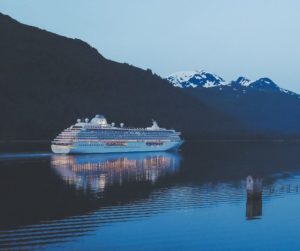In 2005, the five fjords the Nærøyfjord, Aurlandsfjord, Geirangerfjord, Sunnylvsfjord and Tafjord, were inscribed on UNESCO’s World Heritage List. The two fjord districts, henceforth called the Geirangerfjord area and the Nærøyfjord area, are geologically speaking examples of classic fjord landscapes.
The new rules include general amendments of sections 9 and 10 of the Environmental Safety Regulations and special provisions for the world heritage fjords.
The proposed amendments to Environmental Safety Regulations are related to:

– sulphur requirements as in emission control areas (ECAs) for the entire world heritage area
– stricter requirements for NOx emissions
– prohibition against the discharge of sewage and grey water requirement for an environmental instruction
– prohibition against incineration of waste on board ships in the world heritage fjords.
The Norwegian Maritime Authority (NMA) has assessed the need for regulation of the world heritage fjords and a prohibition against heavy fuel oil was considered. Ships may either use fuel with a sulphur content not exceeding 0.10% by weight, or have an approved closed loop exhaust gas cleaning system or an approved hybrid exhaust gas cleaning system in closed loop mode. Ships using an exhaust gas cleaning system to meet the sulphur requirement are required to use a device for reducing visible emissions to air.
Ships of 400 gross tonnage and upwards which are certified to carry more than 15 persons and are engaged on both domestic and foreign voyages, are not allowed to discharge sewage into the world heritage fjords.
Additionally, the NMA suggested a prohibition against incineration of waste on board ships in the world heritage fjords. The aim is to reduce smoke pollution in the world heritage fjords, both from ships underway and ships at berth or anchor in a port area.
A ship may be granted exemption from the NOx requirements set out in MARPOL, if it can be documented that the ship will comply with the Tier III requirements not later than 1 January 2022.
The NMA will verify that requirements are being met by measuring emissions and discharges and carrying out inspections on board the vessels. Over the next few years, Environmental Safety requirements will gradually become stricter, and emissions and discharges are expected to be further reduced.
Source: https://www.sdir.no
Contact us to receive a professional advisory in your area of interest
